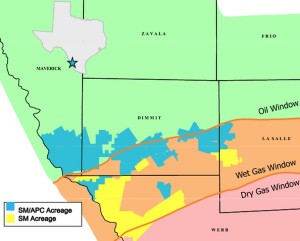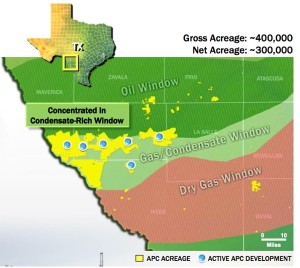Anadarko's drilling manager Mark Sunland was interviewed by MyWestTexas. He talks about new technologies opening up what was traditionally thought to be a source rock. The combination of horizontal drilling and hydraulic fracturing have made the play economic and opened vast domestic resources. Future improvements, such as rotary steerable technology, will only improve the efficiency of shale drilling onshore.
"The technology involved in (horizontal drilling) is not really anything new to us," Sundland stated, adding hydraulic fracturing is not new either, having been around since the late 1940s. "It's applying technology that we use for a different style play and applying it to a new geological setting."
Historically, producers considered shale formations to be sources of oil and gas, but not to be access points because shale is not sufficiently porous nor permeable to release its hydrocarbons efficiently.
Whereas the older vertical drills could access only a small slice of a formation, horizontal drilling can cut through miles of the same layer of rock. Anadarko's record for horizontal hole length is 8,340 feet, with the average Eagle Ford hole coming in at 6,000 horizontal feet. This greater formation exposure was then combined with hydraulic fracturing, which created the artificial permeability needed to allow the oil to flow to the pump.
"This is the beauty of two well-understood technologies being applied in a different way. It has completely changed the paradigm for petroleum engineers," Sundland said.
Rotary steering technology (RST) on the other hand, is "much more high-tech," he said, not relying on bent housing, instead using computer controls to direct the bit. The drawback for RST, and the reason it had been mostly used offshore, is that it is much more costly.
This type of technology has opened not only the Eagle Ford shale - whose reserves Sundland compared to major offshore fields -- but in the Permian Basin and elsewhere as well, driving production rates in Texas to an upward curve for the first time in 40 years.




